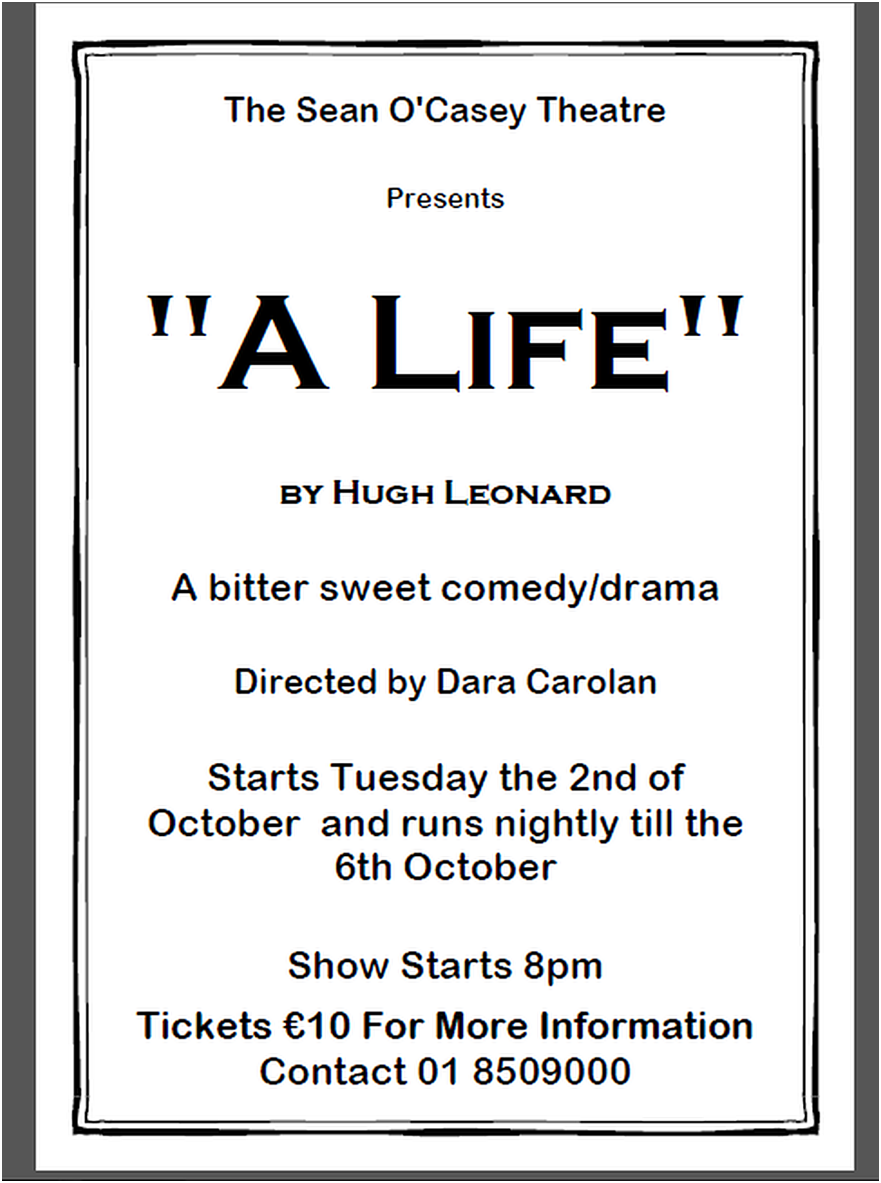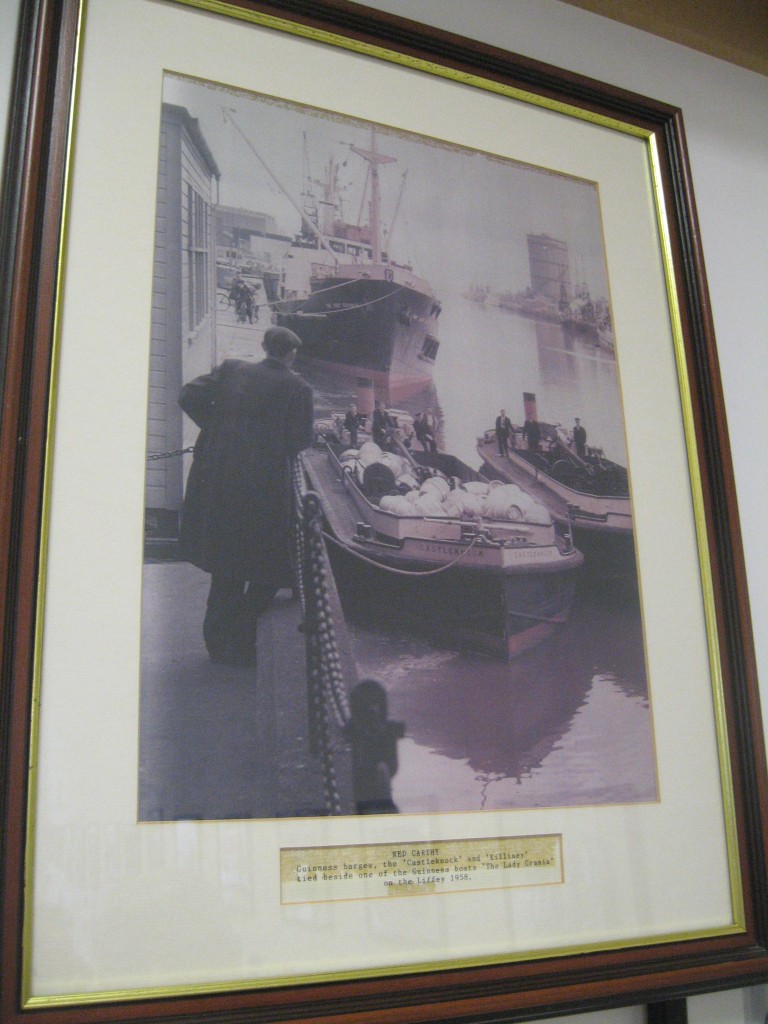
Oct 14
Take yourself up to Monto
Take yourself up to Monto
Here is an upcoming exhibition that may be of interest .
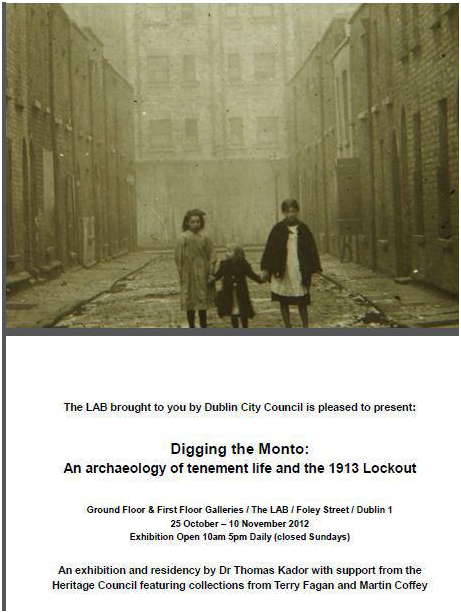
”Come Down to Monto the once famous Red-Light district in the heart of the North Inner City and see a part of its hidden history of tenement life captured in photographs. Hear and see one of the many recording on tenement life by the North Inner City Folklore Project interlinked with photographs of what life was like for a young girl living in the rat invested tenements in Dublin in the 1930s.”
Oct 11
Songs from port to port With Paul O’BrienSunday 14th Oct 3pm
Songs from port to port
With
Paul O’Brien
Sunday 14th October 3pm
(54 Middle Abbey Street)
VENUE: The Twisted Pepper
View Larger Map
If you missed Paul O’Brien‘s performances during the recent Tall Ships event you now have another opportunity to catch him live.
Paul is a renowned oral historian, song writer and folk singer. Join him as he performs a selection of songs based on his travels from Port to Port. Born in the Dublin Docklands, he has travelled the Ports of Europe, from Belfast to Portsmouth and Rotterdam, collecting tales to share.
His songs range from the nostalgic, to the humorous to the haunting. He covers a range of subjects as diverse as the introduction of the 100 ton crane to Dublin, love across the religious divide in the shadow of the Belfast cranes, the Portsmouth sailor who shares his time between his wife and the sea, and the haunting memory of the Jews deported from sheds in Rotterdam harbour. Being Dublin born he of course recalls the Lockout of 1913 and, as he describes them himself: “the seafarers and scoundrels, Dockers and Dossers, the chancers and the characters and the Dock-lingo they spoke”.
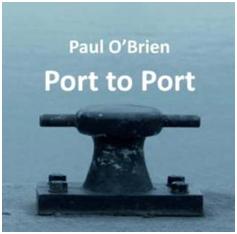
www.paulobrien.eu
Oct 07
October 1915 – The revolutionary dockers in Dublin
________________________________________________________________________________________________________
Remembering 1913
PLEASE NOTE: Next year marks the centenary of the 1913 Lockout. Workers from the Dock-side communities, North and South of the river, were very much to the forefront of the trade union militancy of the time. Members of the East Wall History Group are amongst those that are working together to ensure that the local aspects of this era are properly commemorated. We are anxious to talk to anybody who has any information on this period, most likely through stories passed on from parents or grandparents. If you have anything to contribute, no matter what it is, please get in touch, we would be delighted to talk to you.
_________________________________________________________________________________________________________________________________
October 1915 – The revolutionary dockers in Dublin

In this month in 1915 the “revolutionary dockers in Dublin” were held up as an example by workers abroad. To find out the reason why, read the extract below, which first appeared in The History of the Irish Citizen Army by RM Fox, published in 1943.
_______________________________________________________________________________________
“The way to do peaceful picketing…”
During October of 1915, disputes occurred on the Dublin Docks, due to companies breaking their agreement with the dockers over rates of pay. Connolly wrote in the Workers’ Republic (October 16), that “in view of possible eventualities all the men on strike are undergoing a daily course of military drill.” On November 6, he wrote: “A large section has been formed for drill, and every day the men are instructed in military exercises. We are thus rapidly becoming the best drilled body of men in Ireland. For a time it was difficult to get our men trained, as dock work keeps men employed in the evenings, but the employers are kindly helping us to get over that difficulty. Company after company locks out its men, and then we bring them up to Liberty Hall and take advantage of the opportunity to drill and train them. When each dispute is settled, that squad of men goes back to work and some other squad gets locked out and we get a chance to train them . . . . And when it is over, the men will be back to work on the same rates of pay as their brothers have been conceded. And not a penny less.”
Eventually the docks dispute settled down to a long-drawn-out conflict with the City of Dublin Steam Packet Company. The strikers put on a picket at the North Wall, where clerks in the office were blacklegging on the dockers. The company had invoked the Munitions Act, which contained heavy penalties for strikers. A Nationalist M.P. visited Liberty Hall and threatened the Union with this Act. But the men were unimpressed. They were more perturbed at the way in which the way the police pushed the pickets around outside the shipping office. This seemed a reversion to the worst days of 1913.
Connolly received a report of this and decided that it must be stopped. So he ordered a squad of Citizen Army men to the number of eight or ten to march down the quays, fully equipped with rifles or bayonets, to act as armed pickets. The men obeyed with zest. Outside the offices they halted, formed in double line, and with shining bayonets, carried out their picket duty. Some of the clerks looked through the shed window and saw them marching up the quays. Seized with a guilty panic they bolted. The police then discovered that it was not their place to interfere with Union pickets. After this armed picketing, the dispute was quickly settled.
“It was the first time,” says a Citizen Army man who took part, “that armed workers carried out picket duty in a trade union dispute.”
The news of this event soon spread and John Maclean, the Glasgow revolutionary leader, recommended the Dublin method to workers in Glasgow. “The way to do peaceful picketing,” he cried exultantly at a meeting in the city, “is to march down with Lee Enfield rifles and not a scab on the horizon. Take a line from the revolutionary dockers in Dublin!”
From The History of the Irish Citizen Army RM Fox 1943
___________________________________________________________________________________

Elsewhere in the same book, the importance of the Dock workers in the ranks of the Irish Citizen Army prior to the 1916 rising was referred to. The newspaper excerpt might be a clue to what the author is referring to.
________________________________________________________________________________________
“They worked at awkward hours…”
It must, however, be emphasised here that the Citizen Army – a small force – turned out in practically full strength. Connolly’s own estimate of the numbers of the Citizen Army, given to John Hanratty in March, 1916, when they were both staying in Surrey House, was three hundred armed men. This included the “shot-gun men” – a reserve of dockers who did not parade or drill with the Army, partly because they worked at awkward hours and also because it was thought that they might be more useful at the docks it they were not identified with the general body.
From “The History of the Irish Citizen Army” RM Fox 1943
______________________________________________________________________________________
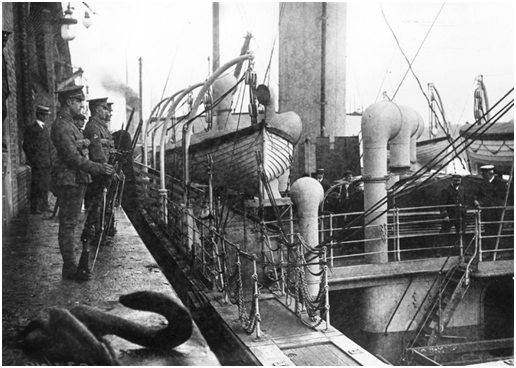
Troops on duty on North Wall during earlier strike.
Oct 07
Remembering 1913
Remembering 1913
Next year marks the centenary of the 1913 Lockout. Workers from the Dock-side communities, North and South of the river, were very much to the forefront of the trade union militancy of the time. Members of the East Wall History Group are amongst those that are working together to ensure that the local aspects of this era are properly commemorated. We are anxious to talk to anybody who has any information on this period, most likely through stories passed on from parents or grandparents. If you have anything to contribute, no matter what it is, please get in touch, we would be delighted to talk to you. eastwallhistory@gmail.com
Oct 03
Sunflower Competition winners announced -
Sunflower Competition winners announced -
The results are in – the measuring tape has been put away , calculations completed and the winners can now be declared .
What a green fingered lot we turned out to be – there was quite a few entrants and the quality was very high. The judging was a stressful affair with the final choices running neck and neck. ( OK , we know sunflowers neither run nor have necks!).

“You are my sunshine …” The winner – 5 Church Road
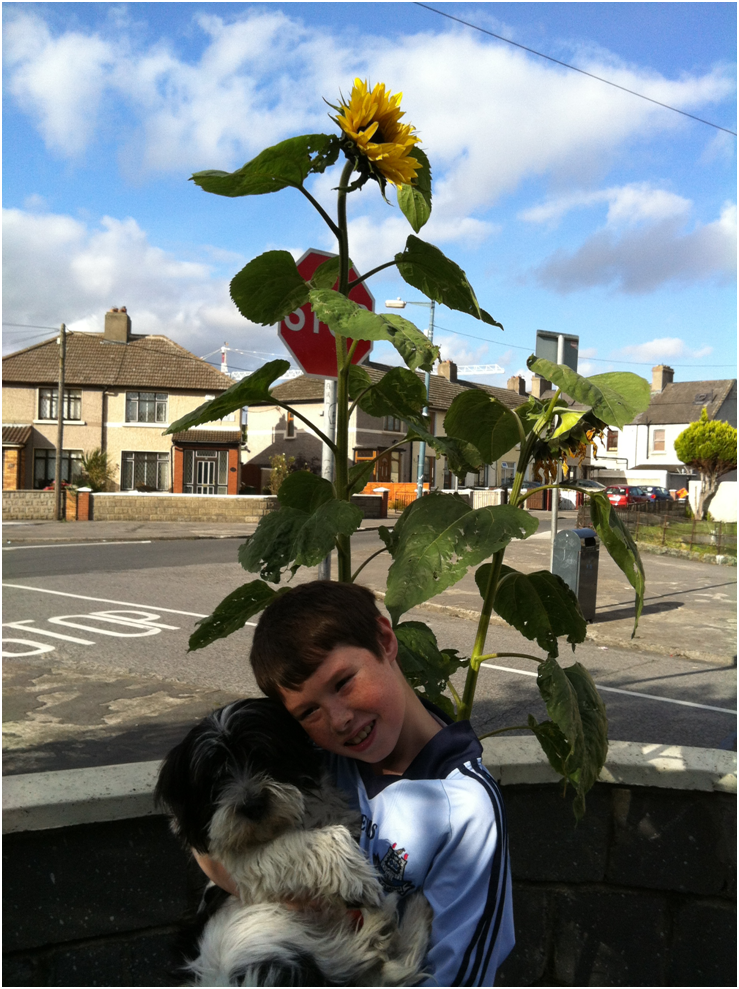
Dannan and Sam celebrate their winner – 27 Bargy Road
The competition was held in two categories - Community(which was open to all residents) and School Child (especially for entrants of school going age).
The winner in the community section was the Fleming family on Church Road and no surprises there! Their magnificent specimen was a sight to behold and couldn’t be missed by anyone passing, including passengers on the 53 and 151.
The winner in the school child section was Dannan O’Loinsigh on Bargy Road . Dannan is pictured below with his horticultural high-rise and is accompanied by his assistant Sam (Maguire) who, we are led to understand, contributed significantly in “watering” the flower over the Summer.
Congratulations to everybody who took part and added a wonderful splash of colour to our community during a very dismal Summer season. Well done to the winners and we all look forward to next years follow up event.
Sep 27
Arthurs Day – recalling the Guinness barges and ships .
Sep 24
New times for Youth Club
New Club times
September 2012
at St. Mary’s Youth Club
Drop-in Clubs:
Mondays:
5.15 – 6.45pm ……………………….. Early Club (ages 10 – 13) girls & boys
7.45 – 9.00pm …………………. Late Club for teenagers ages (13+) boys & girls at secondary school level
9.30 – 10.30pm ……………………….. Night Owls Club (15+) girls & boys
Wednesdays:
5.15 – 6.45pm ……………………….. Early Club ages 10 – 13 girls & boys
8.00 – 9.30pm ……………………….. Late Club for teenagers (13+) boys & girls at secondary school level
Football Clubs:
Mondays:
5.00 – 6.45pm ……………………….. Football Clubs (ages 10-13) boys & girls
8.00 – 9.00pm ……………………….. Football Club (13+) boys & girls
Wednesdays:
5.00 – 6.45pm ……………………….. Football Club (ages 10-13) boys & girls
8.00 – 9.00pm ……………………….. Football Club (13+) boys & girls


